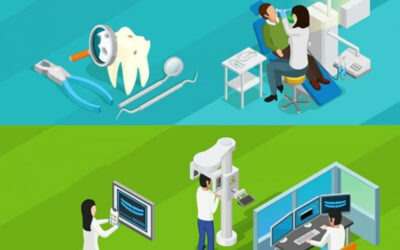Don’t we as dentists come across apprehensive patients on a daily basis. Well, we as dentists always hope our patients are cooperating, making our lives easy. But can we hope for this dream to ever come true? Almost everyone who enters our clinic is either scared, tensed, experiencing anxiety or to some level even dental phobia. Despite being difficult to handle it is important to handle them with professional courtesy. It is the responsibility of the dentist to provide excellent care despite all the hurdles.
What is dental Anxiety?
It is fear, apprehension or stress in a dental setting. This can result in delaying or avoiding dental treatments which have a negative impact in the long run. Dental anxiety becomes dental phobia if the fear becomes irrational and leads to the complete avoidance of the dental office.
Identifying dental anxiety in patients
It may be difficult to identify patients with dental anxiety, but proper communication and patience may point towards the tell-tale signs of the same. Anxious patients are often known to skip appointments for no reason at all. They can be triggered by needles, drills, white coats or even the dental setting in general. Some signs to look out for are:
- Sweating
- Racing heartbeat or palpitations
- Low blood pressure
- Syncope
- Visible distress or crying
- Withdrawal, or using humor or aggression to mask anxiety
If dental anxiety is a part of a wider psychological disorder referral to a psychologist or psychiatrist becomes important.

Understanding the reasons for their dental phobia
It is a very common problem affecting individuals from all age groups. The reasons are varied and need to be managed with empathy and care. So what exactly causes dental anxiety?
- Traumatic dental experience especially in childhood.
- Vicarious learning from anxious family members and friends.
- Fear-provoking portrayal of dentists in the media.
- Vulnerable position of lying in the dental chair.
- Personality traits like neuroticism and self –consciousness.
- History of physical abuse.
- Lack of trust or fear of betrayal.

Managing patients with dental phobia
The etiology of dental anxiety is multifactorial and hence its management also involves multiple approaches. The first task should always be to identify the root cause of the fear. This will pave the way to avoid the vicious cycle of dental fear. It may be managed by psychotherapeutic intervention, pharmacological intervention, or a combination of the two.
PSYCHOTHERAPEUTIC WAYS
- The environment of the dental office must be calm and positive. It can be made unthreatening by soothing music and absence of very bright lights.
- An anxious patient should not to subjected to a long waiting period as it tends to make them more agitated.
- A good dentist-patient rapport is very important. The clinician must hear all the fears of the patient in a non-judgemental manner and try reassuring him/her at every stage.
- The patient should be encouraged to ask questions pertaining to the treatment.
- Negative phrasing should be avoided while talking.
- Light touch may be used to comfort and control and individual.
- Behaviour modification techniques like guided imagery, biofeedback, hypnosis, acupuncture, distraction, positive reinforcement, desensitization, ‘tell-show-do’ and modelling etc. may be used as and when required.
- Relaxation techniques like deep breathing and muscle relaxation can also come in handy.
PHARMACODYNAMIC WAYS:
Should be used only when psychotherapeutic ways are ineffective and the patient is unwilling to undergo treatment. Proper training and risk assessment are the prerequisites for such an intervention. Some commonly used tools are:
- Conscious sedation: It can be inhalational or intravenous. A mixture of Nitrous oxide and Oxygen is given to a patient. It helps reduce anxiety, discomfort, and pain during certain procedures. The patient is still awake and able to communicate with the dentist.
- Anxiety relieving medications- In certain cases anxiolytics can be given after due consideration. These are single dose, short acting medications given an hour before a dental procedure.
- General anaesthesia-It is done in a hospital setting under the supervision of an anaesthetist. Certain procedures have multiple visits and it may be difficult to use general anaesthesia in such cases. It also causes nausea and has a longer post-operative recovery.

Technology can help you deal with apprehensive patients better
- Computer-controlled local anaesthetic delivery- The manner in which the local anaesthetic is administered is very different from the conventional method. This can therefore be very useful in alleviating anxiety in patients who are scared of injections or are needle phobic.
- Electronic dental anesthesia- This uses transcutaneous electric nerve stimulation to achieve anesthesia. This too can therefore be used in needle phobic patients.
- Anxious patients undergoing restorative treatment can be managed by the ‘4 S’ rule. This aims to remove the four triggers of dental anxiety – sight, sound, sensation and smell.
The bottom line
Dental anxiety is a very common occurrence. The behavior of an apprehensive patient is basically an external manifestation of their innermost fears. Once the reasons are identified it becomes easier to find a solution and provide the best care to the patient.
HIGHLIGHTS:
- Dental anxiety can have adverse effects on the life of a patient. It’s important to identify and alleviate them to foster a positive dental attitude.
- The clinician must be extremely empathetic to the problems faced by the patient.
- Proper communication plays a key role in identifying the source of fear.
- Depending on the situation you could use either Psychotherapeutic or pharmacodynamics interventions.
- Proper training is necessary, especially before a pharmacodynamics intervention.





0 Comments